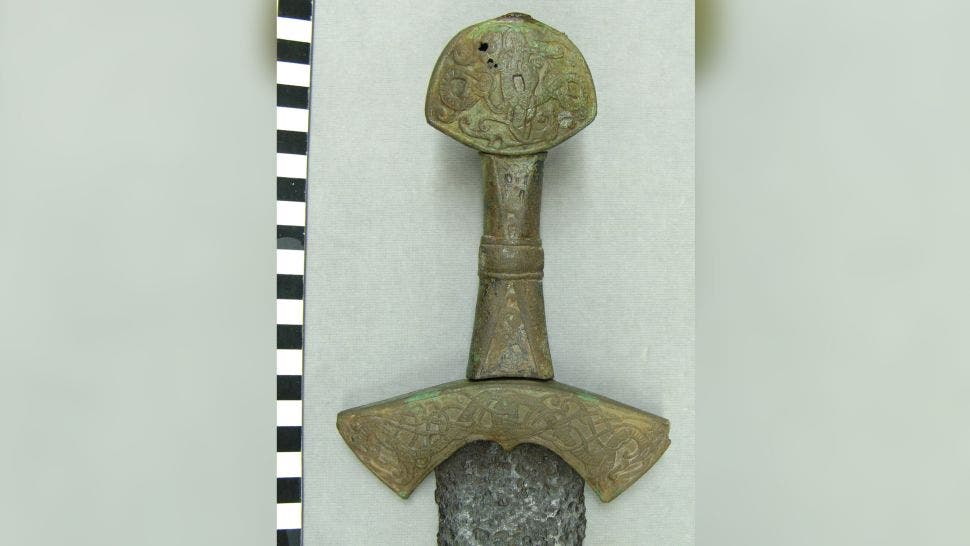A new study has found that a warrior buried 1,000 years ago may have been non-binary.
Excavators uncovered the grave of a warrior in Finland back in 1968.
With what researchers knew about medieval burials at the time, the grave was initially thought to be occupied by a woman.
The person wore a feminine dress and jewelry, items typical for a woman’s burial in that era.
However, scientists were always left puzzled by other items in the grave – two swords.
Instead of presuming the site belonged to a ‘warrior woman’, this finding led the researchers to believe that the grave belonged to two people.
But now, an interesting development has been made in the study – and it may change how we see things…

According to a peer-reviewed study in the European Journal of Archeology, a DNA analysis suggests the remains belonged to a high-status non-binary person.
“Non-binary people feel their gender identity cannot be defined within the margins of the gender binary,” the LGBT Foundation explains. “Instead, they understand their gender in a way that goes beyond simply identifying as either a man or woman.”
The study’s lead author, Ulla Moilanen, tells CNN in an email: “This burial has an unusual and strong mixture of feminine and masculine symbolism, and this might indicate that the individual was not strictly associated with either gender but instead something else.”
So let’s explore this ‘elaborate burial’ further…

The researchers wrote in their study that in the grave, they discovered traces of rabbit hair and bird feathers, alongside brooches – items typically buried with a woman in that era.
But the team was left flummoxed as they explored the remains further, as the sword placed on top of the body appeared to have never been used.
Although this may not seem odd, this is apparently unusual for this period – leading the researchers to describe it as ‘less violent and genderless’ symbolism.
To solidify their theory further, an analysis was made of the only usable fragment of the femur left in the grave.
It found evidence of XXY karyotype, which is now known as Klinefelter syndrome.

“Klinefelter syndrome is a common genetic condition in which people assigned male at birth (AMAB) have an additional X chromosome,” explains Cleveland Clinic.
Mayo Clinic reports that it can reduce muscle mass, lessen facial and body hair, and cause enlarged breast tissue.
The symptoms are often subtle – with some people going through life without realizing they have this condition.
The study’s researchers have stressed that the DNA results were based on a small sample, which means they had to rely on modeling to a certain extent.
Moilanen concludes that the person ‘might not have been considered strictly a female or a male in the early middle ages community. The abundant collection of objects buried in the grave is proof that the person was not only accepted but also valued and respected.
This study challenges the idea of an ‘ultramasculine environment of early medieval Scandinavia’, with archeologists and historians branding the study ‘exciting’, as per The Guardian.
Related Article: Demi Lovato Explains Why She Changed Her Pronouns From They/Them To She/Her
Related Article: Jennifer Lopez Announces Her Child Is Non-Binary During Performance
Do you have a story for us? If so, email us at [email protected]. All contact will be treated in confidence.






